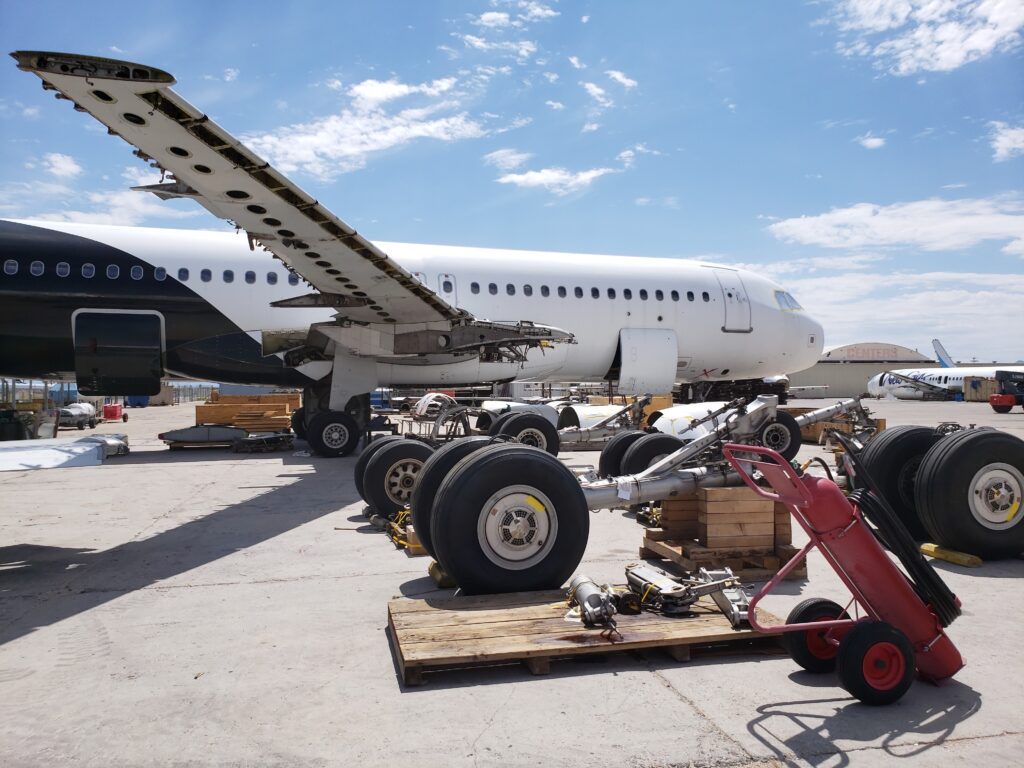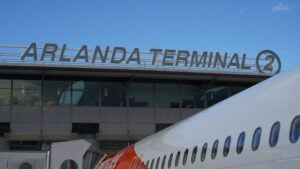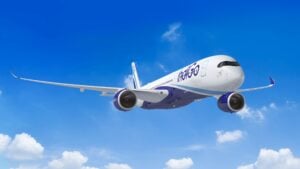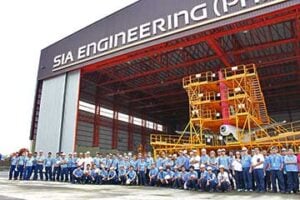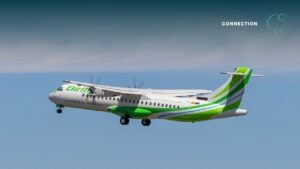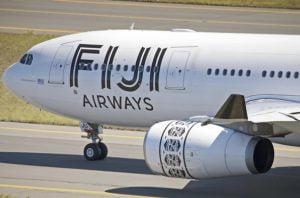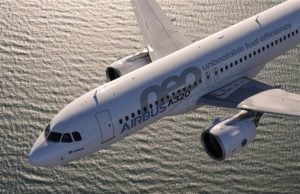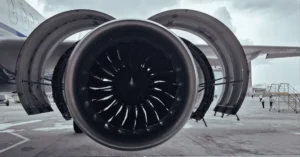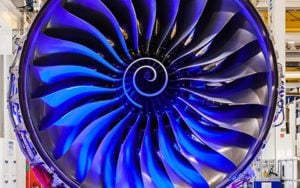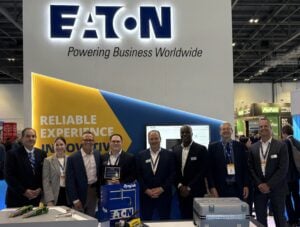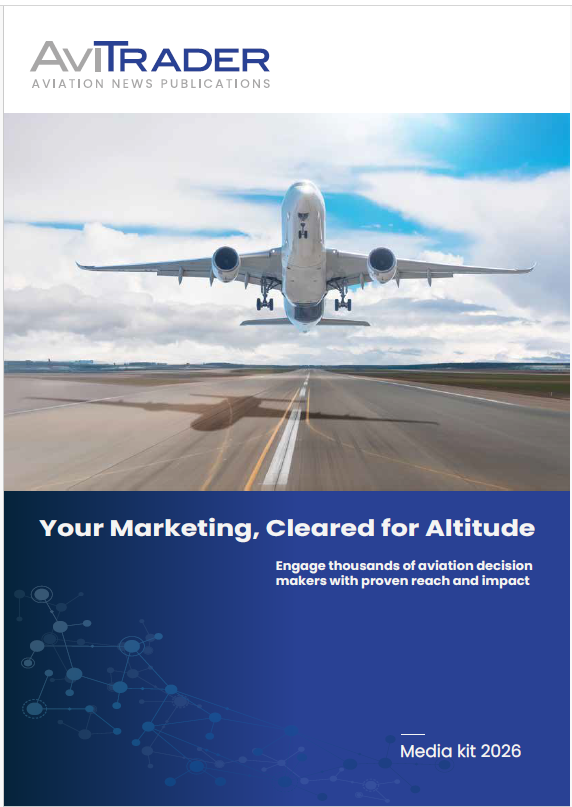Delivery delays in new aircraft and ongoing supply chain problems create continued challenges
Supply and demand are the two principal factor that affect the price of any product. However, because outside agents can have a considerable effect on either of these factors, today’s challenges for tear-down companies and those involved in trading USM are exacerbated by both delays in the delivery of brand-new aircraft together with supply chain issues. We have spoken to five of the major players operating in the aircraft tear-down and used serviceable material market to get a better idea of how they are dealing with such a challenging period in the aviation industry.
Today’s trends in the USM market
It is clear that aircraft availability and the timely supply of USM are two of the greatest challenges currently being faced by many operatives. According to Scott Symington, COO of AJ Walter Aviation Ltd. (AJW), “Delays associated with new-generation platforms such as the NEO and the MAX, combined with the current high demand post-covid era, have led to fewer aircraft being retired, as operators are holding on to aircraft much longer than before or are using the aging fleets for additional capacity. The result is reduced available inventory to part out, which means the demand for USM has dramatically increased for older aircraft. The prolonged operation of these ageing fleets means their maintenance checks still need to be done and we may not have seen this in the past. When you combine this with the ever-present supply chain issues and skilled labour shortages post-covid, we see an increased demand for used material that is significantly out of balance with the available supply.”

AerFin’s SVP EMEA Mark Shimizu has identified inventory as a key point of focus in the current climate. “As a result of the current supply chain challenges, repair TATs have increased across the board (engine component repair TAT’s have increased notably in particular where we are experiencing the most notable impact), driven mainly by man-power shortages and piece part/raw material production delays. This in turn, is resulting in a longer out of service time for component service providers and operators, resulting in increased stock holding to accommodate and to cover extended out of service time,” he reports.
Ascent Aviation Services’ Scott Butler comments: “As OEM supply chains remain very strained with the new aircraft ramp-up, we’re seeing a lot of up ticks in USM usage post-COVID. This is spurring demand for more teardowns across regional, wide- and narrow-body platforms as USM becomes a necessary alternative.”
Mike Cazaz, Chairman and CEO, Werner Aero LLC and GA Telesis’ President & CEO, Abdol Moabery are of similar minds and see a more classic consequence of aircraft remaining longer in service than anticipated. “Several key factors contribute to the issues that we see right now due to global problems with the new generation of engines, large quantity of airplanes grounded, and used aircrafts scheduled to come out of service are staying longer in service. This has started to affect the availability of used spare parts in the market with fewer aircraft teardowns. This causes a significant shortage of parts in some areas which causes prices to go up because the demand is high. Still some global supply chain problems starting at the OEM point failing to deliver new components to repair used parts causing the used parts to remain at the MRO facility for many months instead of days. These situations are indeed a reflection of the challenges faced by the aviation industry: Low supply and high prices of items that are readily available,” Cazaz comments. Moabery has found that: “…because of the issues related to new aircraft delivery delays, there has been a reduction in aircraft retirements and, therefore, a lesser amount of USM availability. This has pushed pricing upwards because, notwithstanding the higher prices, it is still less costly than new replacement parts. Finally, because more mid-life aircraft are flying, there is a greater demand for USM.”

Challenges facing the USM market
When it comes to challenges faced by the USM market, once again aircraft retirements seem to be key to the problem. GA Telesis’ Moabery is quite clear that: “In the current market, there is a ton of demand for USM, but the number of aircraft retirements, which are ultimately feedstock for USM providers, has reduced significantly. Our forecasts a few years ago predicted about 1,000 aircraft retirements in 2023, moving up as high as 1,400 in 2025. The numbers will look more like 400 in 2023, and it will take the market four to six years to catch up. Vallair’s Director of Material Management, Armando Filho is more succinct, stating that: “The main challenges will always be back-to-birth traceability for all components, NIS (non-incident accident statement), and physical condition. Vallair’s USM focus is always on reliable items to guarantee best value for money for customers.”
Scott Butler at Ascent Aviation is of the opinion that TAT for used material is critical at the moment. “The supply chains are still very strained in the MRO networks. Even after your material has been removed from the aircraft, the turn-around times at repair organizations are still very challenging, he comments.
Scott Symington at AJW sees a number of challenges at present. These range from inventory management to procurement, with particular emphasis on the latter. “The Group employs diverse channels for the procurement of its inventory, each with distinct risk and reward profiles, carrying varying degrees of potential surplus inventory. Some components may not be suitable for harvesting, and those with a lower demand profile may take time to trade. Even the components expected to be traded quickly come with an inherent risk, as their condition remains unknown until removal and inspection at a repair facility. You might dispatch a component presumed to be valued at $30,000 on the aircraft, only to find it declared as BER (Beyond Economical Repair) and subsequently scrapped. In essence, this approach entails a bigger risk, albeit with the possibility of greater reward, particularly if the part can be repaired. It also carries a greater likelihood of accumulating surplus inventory, as slower-moving items are acquired alongside the more highly traded ones. Conversely, procuring individual parts selectively from specific suppliers or via trading platforms involves lower risk but correspondingly lower returns. This method is less likely to contribute to surplus inventory, as it entails the purchase of only those specific parts required for servicing contracts or those expected to be in high demand,” he states, adding that “The challenge comes in striking the right balance between these distinct styles of procurement, aiming for optimal returns on investment whilst maintaining a lean inventory pool and minimising surplus stock holdings.”
AerFin’s Mark Shimizu feels that there have been: “… unprecedented increases in repair costs over 2022 and 2023 as OEM’s seek to insulate themselves from increased production costs caused by both global and local cost escalations. These escalations have been driven by many factors including price spikes in the energy and fuel markets, the post-Covid recruitment driving up new employee salaries, national interest rates and inflation increases.” Additionally matters have not been helped by global conflicts, suggesting that: “The current situation in Ukraine has had a major financial impact across the globe and is evidence of how action in one country can truly resonate across the globe.”

Pricing dynamics and cost considerations
For buyers and sellers alike, pricing of USM is critical, Today’s volatile economic environment together with reduced availability of certain aircraft seems to be exacerbating the challenges. Ascent Aviation’s Scott Butler is quite succinct: “TAT is driving everything. The more value you can add to your inventory with repair and quality inspection, the more likely you are to get the sale at a favourable price point.” Werner Aero’s Mike Cazaz is more reactive in his approach as opposed to proactive. “We are in a unique environment now that could last for another 12-16 months. Prices fluctuate every single day sometime by a hundred percent, and it is all subject to availability and ready to go materials,” he comments.
Though clear that supply and demand is a key dynamic, AJW’s Scott Symington is also aware of the criticality of cost consideration. He states that: “Pricing is heavily influenced by supply and demand. When demand for specific aircraft materials or components is high and the supply is limited, prices tend to surge. Conversely, in times of reduced demand and ample supply, prices may decline. The intrinsic value of particular components also plays a role; items like engines or avionics systems often command higher prices due to their complexity and essential role in aircraft operation. However, market conditions, economic fluctuations, and external factors such as fuel prices all exert an influence on pricing,” adding that: “Cost considerations are equally important. Buyers must assess acquisition costs, for example, things such as purchase prices, inspection fees, and transportation expenses. There are costs involved in overhauling used materials to meet safety and quality standards, a concern shared by both buyers and sellers. Logistics expenses tied to material transportation, market fluctuations, regulatory compliance costs, and the ongoing expenses of ownership, including storage and insurance, also have an impact.”
AerFin’s Mark Shimizu is keen to point out that remaining green time for engines is proving critical, especially in a market where there has been a delay in aircraft retirements. He notes that: “We are observing high prices paid for any remaining green time within assets. Piece-part pricing is also firming up due to fewer aircraft entering the market and increasing repair costs, which are driving up values. With fewer assets available for part-out and no significant expected market improvements over the next few years, asset buyers are adopting a more aggressive stance on forward pricing and purchasing, factoring in the expectation that OEM price escalations will persist in the foreseeable future. In our sector, the anticipation of the ‘bow wave’ of retirements has continuously been postponed. Consequently, sellers of aircraft need to keep a cautious eye on this scenario in the coming years and determine the optimal time to trade assets to avoid any downward spirals in asset values resulting from increased supply.”
Vallair’s Armando Filho sums the situation up in a nutshell – “Basically, the pricing dynamics are related to a certain percentage of the price list and historical market price aligned with back-to-birth traceability and condition versus demand. Together these factors determine the pricing dynamics and baseline for any negotiation.”

Choosing the right aircraft
Selecting the right aircraft for teardown can be an even greater challenge today with fewer older aircraft being taken out of service. So, what are the options available to operators when it comes to choosing the right aircraft for teardown and what factors need to be given careful consideration?
Kyle Goodfellow, VP Pricing at AerFin has identified five key areas that affect aircraft selection – demographics, addressable market, geography, market demand, and the repair network. From evaluating the number of aircraft in service and the distribution of aircraft by age through to market demand, but particular interest is taken with the repair network. Lastly, the Repair Network assumes a pivotal role in the aircraft selection process for teardown. Factors under consideration include the dominance of the repair network by OEM or the presence of independent Maintenance, Repair, and Overhaul (MRO) shops. Our evaluation also extends to the strength of our relationships with these entities and the competitiveness of the rates offered. These aspects directly impact repair costs, turn-around times (TAT), and, consequently, influence our acquisition model,” Goodfellow explains, while adding that: “The addressable market constitutes a vital aspect of our comprehensive review process. Here, we identify key players in the markets, distinguishing between those affiliated with Original Equipment Manufacturers (OEM) and independent entities.”
Vallair has two age criteria depending on whether they are looking at commercial passenger or cargo aircraft. Armando Filho comments that: “When looking for teardown aircraft Vallair considers assets that are younger than 20 years old for the commercial passenger market, and younger than 30 years of age for the cargo market. Selection criteria will vary according to the aircraft’s physical condition, back-to-birth traceability and price. If you have green time available on key components, then the opportunity to secure better and faster deals increases.”
Scott Symington at AJW sees the landscape slightly differently, with age being the key. “… the age of an aircraft is a significant consideration. As aircraft age, they can become less cost-effective to operate and maintain, prompting airlines and lessors to retire them. This leads to a surplus of older aircraft, making them attractive candidates for teardown. Aircraft that have been well-maintained and remain structurally sound are more desirable for teardown because their components are likely to be in better condition and have higher market value. The aviation industry continually requires spare parts to support its fleet, and the demand for specific components can influence the selection of an aircraft. Additionally, regulatory compliance, ownership and lease agreements, manufacturer and model characteristics, and economic factors, such as fuel prices and passenger demand, all play a role in the decision. Proximity to teardown facilities and skilled personnel also affects teardown feasibility,” he states.
Ascent Aviation’s Scott Butler concurs with the idea that age is critical. “Age and market are definitely driving most of the teardowns. Widebody aircraft were slower to return to flying post-COVID, however, we’ve seen strong demand for A330s of all ages. The increase in P2F programmes is also helping new markets emerge,” he comments. In a similar, but more specific vein, Werner Aero’s president and CEO, Mike Cazaz has his eye on younger aircraft, saying that: “From Werner’s point of view our objective is to buy an aircraft that is younger than 15 years simply because the aircraft that are older contain parts that are less desirable in the market. Our expertise and focus rely on the areas of narrowbody aircraft and regional jets in particular A320, B737, and E-jet aircrafts. These three platforms are most commonly used by airlines worldwide.”
High-value teardown assets
With an aircraft teardown, clearly there are certain assets which are of greater value such as landing gear, engines and avionics. The question is, how do individual MRO enterprises deal with these valuable components, as they can make or break a successful teardown? What happens to them once they have been removed and prepared for resale?
AJW’s COO, Scott Symington provides an invaluable insight, revealing just how complex this task can be and highlighting key requirements that have to be met. “There is an initial asset value appraisal of the aircraft and valuation of the remaining green time followed by an assessment of the condition of the aircraft. We then derive the potential harvest list and use both historic data and current repair costs and FMV analysis to build the business case and ROI of the asset investment. We then carry out a full aircraft and records audit to establish the maintenance history and the potential for aftermarket resale of the parts. The team then begins the disassembly, beginning with the removal of external parts and then moving internally to components, systems, avionics, and other high-cost equipment while cross-referencing the associated paperwork and maintenance history of each component from the harvest list. Once this is done, components are inspected and assessed for possible reuse, after which those that can be used in the aftermarket are labelled and catalogued into an inventory tracking and location system. Items that will be reused are then overhauled according to industry standards and may be tested and recertified to meet requirements. Here we utilise our extensive network of approved MRO suppliers, including our own state-of-the-art facility in Montreal, AJW technique, to ensure components are inspected, and repaired/overhauled to the latest standards and turnaround times are kept to a minimum, he explains.
According to Abdol Moabery at GA Telesis, getting parts recertified is vital, making clear that: “All parts, regardless of utility and nomenclature, need to be recertified by a licensed MRO or the OEM. There are published guidelines related to how this is done. One key variable is how the parts are stored and preserved between the time they are removed from an aircraft or engine and recertified. Then, there is a whole other process once the parts are recertified and put on the shelf awaiting use. If this is not done properly, then it causes extra steps in the maintenance process, which can be quite costly.” One clearly identified factor that is unavoidable, and that is the part-value balance, as Vallair’s Armando Filho makes abundantly clear: “Using the Pareto analysis, usually the 80% of the value resides in 20% of the parts these are: engines, APUs, landing gears, nacelles, THSA (Trimmable Horizontal Stabilizer Actuator), RAT (Ram Air Turbine), avionics, engine mounts, escape slides, wheels, brakes, flaps, slats, elevators, etc., these can provide short to medium term returns, the remaining parts can take longer to be sold.”
AerFin’s Teardown Manager, Cameron Jones goes into great detail on this particular aspect of aircraft teardowns. He is particularly keen to point out the responsibility of creating a trustworthy partnership with disassembly partners. “Focus on attention to detail with regards to removal and preparation of high value components such as Engines, Avionics, Landing Gears and Nacelles is enormously important to AerFin as a business, as these assets contribute considerably to the onward sales value. Having the trust in our disassembly partners to remove, prepare and crate such assets with great care and to pre-specified requirements is imperative. As a business, we target closure of asset sales to be located with AFRA accredited facilities. These AFRA certified facilities offer an accreditation program based on best management practices to ensure all components are removed in a safe, efficient and environmentally friendly manner, whilst mitigating any damage to the assets to ensure AerFin realise maximum value from our investments. We request from all crates be manufactured to ISO standards which uphold our ASA certification. These standards ensure the safe packaging for onward international transportation to our customers, vendors or multiple worldwide warehouse facilities,” he explains.

Mike Cazaz at Werner Aero is keen to point out that while disassembling an aircraft may be one challenge, the safe and secure transportation of the high-value parts is vital. He explains that: “Engines and landing gears are the most expensive parts in an aircraft, so they require special care and knowledge while removing them. First, they get tested while still installed in the aircraft. Then they must be removed by expert technicians and placed in the proper shipping container. Engines get removed first and must be placed on proper engine stand to protect and transport them. Landing gears must be properly placed in shipping crates per OEM guidelines for proper shipping. We do that to avoid irreversible damage to the assets. Avionics are removed just like any other part on the aircraft but must be packaged with the proper material to prevent discharge then packed and shipped in a proper avionics’ container.”
Scott Butler at Ascent Aviation sums it up as follows: “Managing the repair cycle is key to maximizing the value of the asset being torn down. Securing overhaul or time continuation inspection slots well in advance is critical to ensuring your product can be delivered to the end customer on time.”
In summary
There is no question that any involvement in the aircraft teardown sector of the MRO market currently involves walking a tightrope between supply and demand. However, that balance which needs to be struck is not solely between the supply and demand for USM, but also the availability of aircraft for teardown to meet the current strong demand. There looms a potential Catch 22 situation where prices for UAM are keen owing to the shortfall of available aircraft. However, that availability is being affected because there is a shortage of new aircraft coming off the production line, meaning that older aircraft that might be suitable for teardown remain operational. That landscape may change once inroads have been made into the delivery backlog of new aircraft, thus with more aircraft available for teardown, their value will drop and subsequently so will the cost of USM. If USM costs fall, then there may be the temptation to hold on to rather than sell an ageing aircraft as maintenance costs will be reduced, thus creating a shortfall of suitable teardown opportunities. The result, a spike in the value of USM, and so the cycle could continue…

